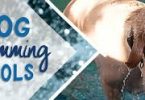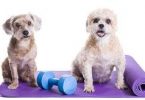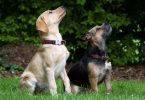Destructive chewing is one of the top reasons people surrender their dogs to animal shelters. It’s also the cause of many emergency veterinary visits, forfeited damage deposits, unplanned household repairs, wardrobe tragedies, human headaches and frustration in general.
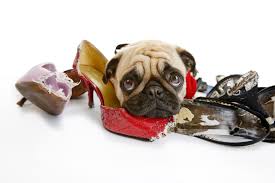 Unfortunately, chewing is a natural behavior for dogs. It is normal for dogs to be “chewy” . Dogs have a desire to manipulate objects, and they use their mouths in the same way humans use their hands.
Unfortunately, chewing is a natural behavior for dogs. It is normal for dogs to be “chewy” . Dogs have a desire to manipulate objects, and they use their mouths in the same way humans use their hands.
Age plays a role as well. Puppies are like children, who must put everything into their mouths, you can expect plenty of chewing from them, especially when they are teething. Most dogs aren’t considered mature until they reach the age of 3. Some breeds, by nature, are more prone to chewing. Chewing behavior usually diminishes as a dog ages, but even older dogs enjoy a good gnaw every now and then, especially if undesirable chewing is not corrected when young.
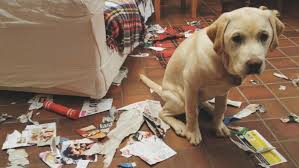
Because chewing is calming to a dog, nervous or anxious dogs tend to chew. Dogs that experience separation anxiety are prone to destructive chewing on furniture, walls and door frames, and even attempting to chew their way out of a crate. A dog left alone for periods of time with no healthy diversions will create their own fun and chewing is natural entertainment. A bored dog with pent up energy may also try to amuse themselves with energetic chewing.
Owners must teach their dog the ground rules, and then limit the opportunity for making mistakes. It’s unfair to blame a dog for a behavior that is innate. If your dog is chewing things you consider inappropriate, look in the mirror and say “It’s my fault”, then follow the steps below.
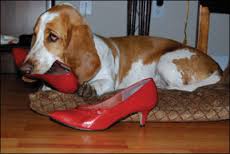
You need to begin by training your dog to chew appropriate objects. Your dog can’t distinguish between a bone and your new designer shoes. That sounds sort of obvious, but humans sometimes tend to forget that. There’s nothing that distinguishes a table leg from a toy that’s next to it, in a dog’s mind. You have to teach them what is and is not appropriate.
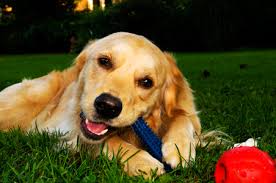
Begin by following your dog around the house, any time he’s loose, with a designated chew toy, both dog and human approved. When your dog begins to mouth an inappropriate object, verbally tell him “no”. Quickly offer him the chew toy and praise lavishly when he turns his attention to it. Repeat until your dog is actively looking for his chew toy. It’s important not to leave your dog unsupervised when he is in training. If you can’t keep your eye on him at all times, confine him to his crate or other safe place and give him a few chew toys to keep him occupied.
 Keep a cache of toys, scattered around the house where he can find them, preferably in his own toy box, where he can gain access to them so he can pick one out whenever he wants. Rotating chew toys can keep his interest high. Anytime he selects one of his toys, praise him. Anytime he mouths an inappropriate object, offer him his chew toy. Show your dog what you want him to do. Don’t just scold him and tell him “no”. It may interrupt the behavior, but it doesn’t teach him anything.
Keep a cache of toys, scattered around the house where he can find them, preferably in his own toy box, where he can gain access to them so he can pick one out whenever he wants. Rotating chew toys can keep his interest high. Anytime he selects one of his toys, praise him. Anytime he mouths an inappropriate object, offer him his chew toy. Show your dog what you want him to do. Don’t just scold him and tell him “no”. It may interrupt the behavior, but it doesn’t teach him anything.
If you discover inappropriate chewing that you didn’t witness, don’t rant and rave. Your dog won’t realize what your upset about. If you come home and get angry, your dog is going to associate your anger with your homecoming, not with chewing on your couch. Worse, if this occurs a few times, your dog may start anticipating your anger upon your return, which in turn makes him more anxious, which may actually cause him to chew more. And don’t read too much into chewing. Many owners believe their dogs have destroyed something to get even with them or out of spite. But dogs don’t think that way.
Helpful Tips
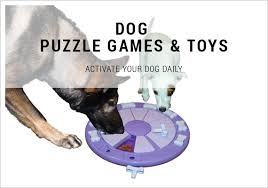


Tire him out. A good daily romp can leave you with a pooch more interested in napping than chewing. A tired dog is a happy dog. Mental exercise is an important part of the equation. If you add in a 20 minute trick training or play session everyday, your dog will nap longer afterward than if he went on a long walk. It also helps alleviate boredom.

Change his diet. Your dog may be eating a food that gives him too much energy, or he may be having a reaction to additives or certain types of proteins in his food. Many behavior problems can actually be solved by changing their diet.
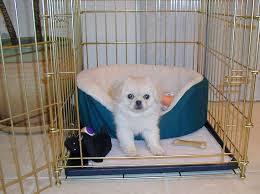
 Make him earn his run of the house. A big mistake many owners make is allowing their dog too much freedom too quickly. Rule number 1 is set your dog up to succeed. Don’t let him practice doing something you don’t want him to do when your not there.
Make him earn his run of the house. A big mistake many owners make is allowing their dog too much freedom too quickly. Rule number 1 is set your dog up to succeed. Don’t let him practice doing something you don’t want him to do when your not there.
In the beginning, whenever you can’t be around to supervise your dog, confine him to a crate or gated area. Gradually give him more freedom to roam, but you always need to supervise. Once he is fine in the entire house when your home, practice extremely short departures. Leave him a few special toys, go out the front door for a couple of minutes, then return. If that goes well, gradually build up your departure time. Continue this incrementally in short increases (a few minutes at a time) as long as no problems arise. However, if you return after a departure to find chewing mistakes, reduce the length of your absence and continue training.
Don’t expect perfection at first. Even if you think your dog is perfectly chew trained, incidents may still occur. A variety of things can set off a dog, from thunderstorms to trucks backfiring, to gunshots and firecrackers and even a medical condition. If your dog had an unexpected chewing accident, try to figure out what happened before you decide he needs to go back into confinement when your not home.
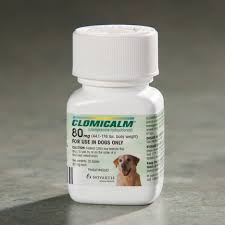
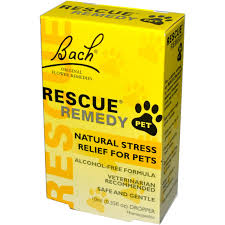
 Last resort-medication. If the underlying cause of your dog’s chewing is serious, such as full blown separation anxiety, a behavioral approach alone may not be enough to solve the problem. Your veterinarian may prescribe an anti anxiety drug such as Clomicalm to be used in conjunction with training to lessen the symptoms of anxiety. Dog’s with severe separation anxiety are suffering, and treating them with medication to relieve that suffering is the humane thing to do. There are also many All Natural remedies on the market for pets. These can be given either topically or orally.
Last resort-medication. If the underlying cause of your dog’s chewing is serious, such as full blown separation anxiety, a behavioral approach alone may not be enough to solve the problem. Your veterinarian may prescribe an anti anxiety drug such as Clomicalm to be used in conjunction with training to lessen the symptoms of anxiety. Dog’s with severe separation anxiety are suffering, and treating them with medication to relieve that suffering is the humane thing to do. There are also many All Natural remedies on the market for pets. These can be given either topically or orally.
There are products on the market that you spray on items you don’t want your dog to chew. Invented by a pharmacist in 1960, Bitter Apple spray leaves an unpleasant yet harmless taste on your dog’s fur to discourage licking, chewing and biting. Keeps dogs from licking wounds and hot-spots, so they have a chance to heal properly and also helps dogs curb their chewing of precious household items.
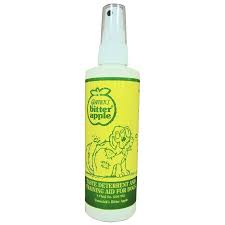 Taste deterrents are intended to stop dogs from chewing and licking things they shouldn’t. Owners can apply taste deterrents to various off-limits objects outdoors and around the house—and even to their own hands. (Please consult a veterinarian before applying any taste deterrent to your dog’s skin or fur. Some products can sting if applied to raw or broken skin.)
Taste deterrents are intended to stop dogs from chewing and licking things they shouldn’t. Owners can apply taste deterrents to various off-limits objects outdoors and around the house—and even to their own hands. (Please consult a veterinarian before applying any taste deterrent to your dog’s skin or fur. Some products can sting if applied to raw or broken skin.)
When you first use a deterrent, apply a small amount to a piece of tissue or cotton wool. Gently place it directly into your dog’s mouth. Allow him to taste it and then spit it out. If your dog finds the taste unpleasant, he might shake his head, drool or retch. He might sniff the piece of tissue or wool, but he probably won’t pick it up again. Ideally, he’ll recoil from it. You want him to learn the connection between the taste and the odor of the deterrent so that he’ll avoid chewing objects that smell like it. After letting your dog taste the deterrent, spray or rub it on all objects you don’t want him to chew or lick. Reapply the deterrent every day for two to four weeks to be sure your dog will no longer bother with the objects.
CC Holland-Elle
Web MD



